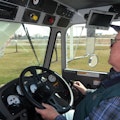The Big Three’s ICE Pickup Trucks
The internal combustion engine, often referred to as ICE, seems to have a solid though limited future as the nation and the world make an accelerating shift toward cleaner sources of propulsion. Engineers continue to improve gasoline and diesel engines, making them more efficient and increasingly capable, and builders are investing millions of dollars to produce these better products.
Truck makers, meanwhile, are preparing EVs to meet the future.
“We are in a world in transition in terms of energy,” said Allen Schaeffer, executive director of the Diesel Technology Forum, which advocates continued use of modern ICEs. “We are reliant, heavily, on fossil fuel energy but also trying to make a move toward using more renewable energy. Both in the kind of energy that powers our homes and our vehicles, machines, and equipment, the internal combustion engine is seated squarely between these two worlds.”
Yet Clean Air authorities push for quick adoption of clean technologies, especially electric power. Many people say that electric utilities will never be able to supply enough power to charge all the batteries-on-wheels envisioned by government leaders. One answer is installation of solar-panel arrays to support electrification, and that is what is happening with several projects begun in California.
Constant improvements, active marketing efforts and solid dealer support keep the domestic Big Three automakers’ full-size pickups on top of the market. And internal combustion engines, both gasoline and diesel, mated solely with automatic transmissions, comprise the dominant powertrain type, probably for much of the 2020s. Here’s a lineup of those products.
About the Author

Tom Berg
Tom Berg is widely acknowleged as one of the top truck writers in the industry. He has covered construction for more than 34 years, and has test-driven well over 150 trucks for Construction Equipment.